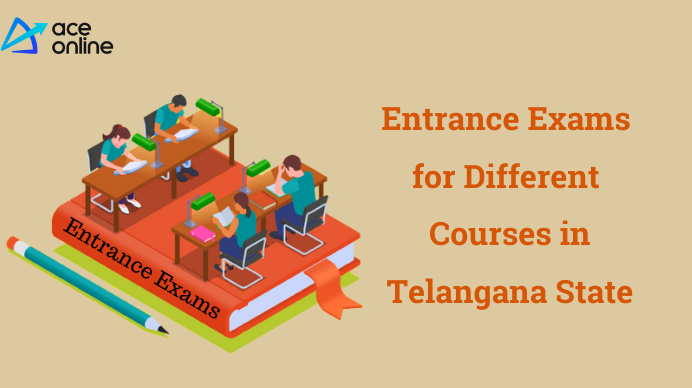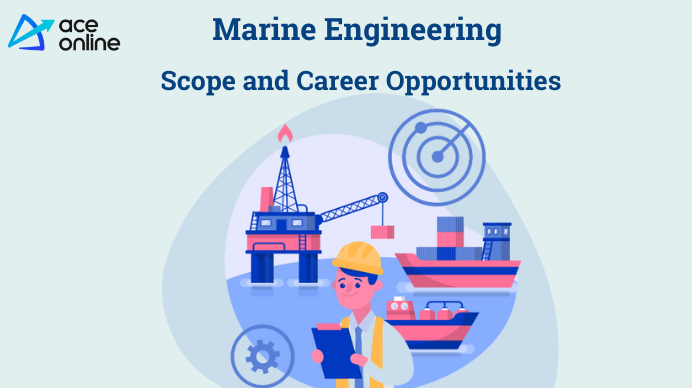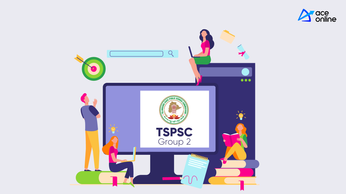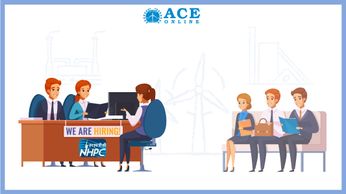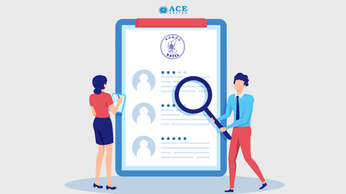Engineering Services Examination (ESE/IES) is one of the most popular -after exams in India conducted once in a year. Engineering graduates aspire to clear this examination to get placed in reputed positions in various government organisations. Due to the difficulty of the examination and the selection procedure it is considered as the toughest exam when compared to other.Every year, UPSC conducts ESE in four engineering streams.
Category | Branch |
Category I | Civil Engineering |
Category II | Mechanical Engineering |
Category III | Electrical Engineering |
Category IV | Electronics & Telecommunication Engineering |
The candidates who get selected for ESE, enjoy a very high respect and stature in the society. Candidates who are selected for ESE are appointed as Assistant Executive Engineer in various departments under central government for Group A and Group B posts. The various services in which recruitment is made through ESE include Indian Railways, Central Engineering, Central Water Engineering, Border Roads Engineering, Indian Defence Service of Engineers, Indian Ordnance Factories, Central Power Engineering, Indian Naval Armament Service, Central Electrical & Mechanical Engineering, Electronics & Telecommunication Engineering, Indian Telecommunication Service, Wireless Planning etc.
ESE Exam Age Limit: 21 to 30 years (of Examination Year)
ESE Exam Eligibility: Engineering Degree
ESE Exam Application Fee
For ESE Exam Candidates need to pay the fees of Rs. 200 at the time of submitting application. The payment is payable through SBI challan or Online depending on candidates interest. The people belong to SC/ST/PH and women candidates are exempted from fee.
ESE Exam Posts
Category | Group-A Services/Posts |
ESE Exam Category -1 Civil Engineering | Indian Railway Service of Engineers Indian Railway Stores Service (Civil Engineering Posts) Central Engineering Service Central Engineering Service (Roads) Survey of India AEE (Civil) in Border Road Engineering Service Indian Defence Service of Engineers AEE (QS&C) in MES Surveyor Cadre Central Water Engineering (Group 'A') Service Indian Skill Development Service.
|
ESE Exam Category -2 Mechanical Engineering | AEE in GSI Engineering Service Gr ‘A’ Indian Defence Service of Engineers. Indian Naval Armament Service Assistant Naval Store Officer in Indian Navy Border Roads Engineering Services Central Water Engineering Service Central Power Engineering Service Indian Skill Development Service Central Power Engineering Service Military Engineer Services
|
ESE Exam Category -3 Electrical Engineering
| Central Electrical & Mechanical Engineering Service Indian Defense Service of Engineers Assistant Naval Store Officer in Indian Navy Central Power Engineering Service Indian Skill Development Service Central Power Engineering Service Military Engineer Services
|
ESE Exam Category -4 Electronics and Communication Engineering | Indian Radio Regulatory Service Indian Telecommunication Service Indian Naval Armament Service Assistant Naval Store Officer in Indian Navy Central Power Engineering Service Indian Skill Development Service Junior Telecom Officer Central Power Engineering Service Military Engineer Services
|
ESE Exam Pattern
ESE Prelims Exam Pattern Stage-I: Preliminary Examination (Objective Papers) |
STAGE-I | PAPER TYPE | DURATION | MARKS |
PAPER-I | General Aptitude Engineering Aptitude
| 02 Hours | 200 |
PAPER-II | Engineering Discipline | 3 Hours | 300 |
Total Marks | 500 |
ESE Mains Exam Pattern Stage-II: Main Examination (Conventional Papers) |
STAGE-II | PAPER TYPE | DURATION | MARKS |
PAPER-I | Engineering Discipline | 3 Hours | 300 |
PAPER-II | Engineering Discipline | 3 Hours | 300 |
Total Marks | 600 |
Total Marks (MAINS + PRELIM) | 1100 |
ESE Interview cum Personality Stage-III: Personality Test |
Stage - III |
|
| Marks |
Personality Test |
|
| 200 |
Total Marks | STAGE-I + STAGE-II + STAGE III |
| 1300 |
Crack the upcoming ESE Exam through ESE Online Coaching
ESE Exam Syllabus
ESE Civil Engineering Syllabus
Paper | Syllabus |
Paper - I | Building Materials Stone, Lime, Glass, Plastics, Steel, FRP, Ceramics, Aluminum, Fly Ash, Basic Admixtures, Timber, Bricks and Aggregates: Classification, properties and selection criteria;Cement: Types, Composition, Properties, Uses, Specifications and various Tests; Lime & Cement Mortars and Concrete: Properties and various Tests; Design of Concrete Mixes: Proportioning of aggregates and methods of mix design.
Solid Mechanics Elastic constants, Stress, plane stress, Strains, plane strain, Mohr’s circle of stress and strain, Elastic theories of failure, Principal Stresses, Bending, Shear and Torsion.
Structural Analysis Basics of strength of materials, Types of stresses and strains, Bending moments and shear force, concept of bending and shear stresses; Analysis of determinate and indeterminate structures; Trusses, beams, plane frames; Rolling loads, Influence Lines, Unit load method & other methods; Free and Forced vibrations of single degree and multi degree freedom system; Suspended Cables; Concepts and use of Computer Aided Design.
Design of Steel Structures Principles of Working Stress methods, Design of tension and compression members, Design of beams and beam column connections, built-up sections, Girders, Industrial roofs, Principles of Ultimate load design.
Design of Concrete and Masonry structures Limit state design for bending, shear, axial compression and combined forces; Design of beams, Slabs, Lintels, Foundations, Retaining walls, Tanks, Staircases; Principles of prestressed concrete design including materials and methods; Earthquake resistant design of structures; Design of Masonry Structure.
Construction Practice, Planning and Management: Construction - Planning, Equipment, Site investigation and Management including Estimation with latest project management tools and network analysis for different Types of works; Analysis of Rates of various types of works; Tendering Process and Contract Management, Quality Control, Productivity, Operation Cost; Land acquisition; Labor safety and welfare.
|
Paper - II | Flow of Fluids, Hydraulic Machines and Hydro Power (a) Fluid Mechanics, Open Channel Flow, Pipe Flow: Fluid properties; Dimensional Analysis and Modeling; Fluid dynamics including flow kinematics and measurements; Flow net; Viscosity, Boundary layer and control, Drag, Lift, Principles in open channel flow, Flow controls. Hydraulic jump; Surges; Pipe networks. (b) Hydraulic Machines and Hydro power - Various pumps, Air vessels, Hydraulic turbines – types, classifications & performance parameters; Power house – classification and layout, storage, pondage, control of supply.
Hydrology and Water Resources Engineering Hydrological cycle, Ground water hydrology, Well hydrology and related data analysis; Streams and their gauging; River morphology; Flood, drought and their management; Capacity of Reservoirs. Water Resources Engineering : Multipurpose uses of Water, River basins and their potential; Irrigation systems, water demand assessment; Resources - storages and their yields; Water logging, canal and drainage design, Gravity dams, falls, weirs, Energy dissipators, barrage Distribution works, Cross drainage works and head-works and their design; Concepts in canal design, construction & maintenance; River training, measurement and analysis of rainfall.
Environmental Engineering (a) Water Supply Engineering: Sources, Estimation, quality standards and testing of water and their treatment; Rural, Institutional and industrial water supply; Physical, chemical and biological characteristics and sources of water, Pollutants in water and its effects, Estimation of water demand; Drinking water Standards, Water Treatment Plants, Water distribution networks. (b) Waste Water Engineering: Planning & design of domestic waste water, sewage collection and disposal; Plumbing Systems. Components and layout of sewerage system; Planning & design of Domestic Waste-water disposal system; Sludge management including treatment, disposal and re-use of treated effluents; Industrial waste waters and Effluent Treatment Plants including institutional and industrial sewage management. (c) Solid Waste Management: Sources & classification of solid wastes along with planning & design of its management system; Disposal system, Beneficial aspects of wastes and Utilization by Civil Engineers. (d) Air, Noise pollution and Ecology: Concepts & general methodology.
Geo-technical Engineering and Foundation Engineering (a) Geo-technical Engineering : Soil exploration - planning & methods, Properties of soil, classification, various tests and inter-relationships; Permeability & Seepage, Compressibility, consolidation and Shearing resistance, Earth pressure theories and stress distribution in soil; Properties and uses of geo-synthetics. (b) Foundation Engineering: Types of foundations & selection criteria, bearing capacity, settlement analysis, design and testing of shallow & deep foundations; Slope stability analysis, Earthen embankments, Dams and Earth retaining structures: types, analysis and design, Principles of ground modifications.
Surveying and Geology (a) Surveying: Classification of surveys, various methodologies, instruments & analysis of measurement of distances, elevation and directions; Field astronomy, Global Positioning System; Map preparation; Photogrammetry; Remote sensing concepts; Survey Layout for culverts, canals, bridges, road/railway alignment and buildings, Setting out of Curves. (b) Geology : Basic knowledge of Engineering geology & its application in projects.
Transportation Engineering Highways - Planning & construction methodology, Alignment and geometric design; Traffic Surveys and Controls; Principles of Flexible and Rigid pavements design. Tunneling - Alignment, methods of construction, disposal of muck, drainage, lighting and ventilation. Railways Systems – Terminology, Planning, designs and maintenance practices; track modernization. Harbors – Terminology, layouts and planning. Airports – Layout, planning & design.
|
ESE Mechanical Engineering Syllabus
Paper | Syllabus |
Paper 1 | Fluid Mechanics Basic Concepts and Properties of Fluids, Manometry, Fluid Statics, Buoyancy, Equations of Motion, Bernoulli’s equation and applications, Viscous flow of incompressible fluids, Laminar and Turbulent flows, Flow through pipes and head losses in pipes.
Thermodynamics and Heat transfer Thermodynamic systems and processes; properties of pure substance; Zeroth, First and Second Laws of Thermodynamics; Entropy, Irreversibility and availability; analysis of thermodynamic cycles related to energy conversion: Rankine, Otto, Diesel and Dual Cycles; ideal and real gases; compressibility factor; Gas mixtures. Modes of heat transfer, Steady and unsteady heat conduction, Thermal resistance, Fins, Free and forced convection, Correlations for convective heat transfer, Radiative heat transfer – Radiation heat transfer coefficient; boiling and condensation, Heat exchanger performance analysis
IC Engines, Refrigeration and Air conditioning SI and CI Engines, Engine Systems and Components, Performance characteristics and testing of IC Engines; Fuels; Emissions and Emission Control. Vapour compression refrigeration, Refrigerants and Working cycles, Compressors, Condensers, Evaporators and Expansion devices, Other types of refrigeration systems like Vapour Absorption, Vapour jet, thermo electric and Vortex tube refrigeration. Psychometric properties and processes, Comfort chart, Comfort and industrial air conditioning, Load calculations and Heat pumps.
Turbo Machinery Reciprocating and Rotary pumps, Pelton wheel, Kaplan and Francis Turbines, velocity diagrams, Impulse and Reaction principles, Steam and Gas Turbines, Theory of Jet Propulsion – Pulse jet and RamJet Engines, Reciprocating and Rotary Compressors – Theory and Applications
Power Plant Engineering Rankine and Brayton cycles with regeneration and reheat, Fuels and their properties, Flue gas analysis, Boilers, steam turbines and other power plant components like condensers, air ejectors, electrostatic precipitators and cooling towers – their theory and design, types and applications;
Renewable Sources of Energy Solar Radiation, Solar Thermal Energy collection - Flat Plate and focusing collectors their materials and performance. Solar Thermal Energy Storage, Applications – heating, cooling and Power Generation; Solar Photovoltaic Conversion; Harnessing of Wind Energy, Biomass and Tidal Energy – Methods and Applications, Working principles of Fuel Cells.
|
Paper II | Engineering Mechanics Analysis of System of Forces, Friction, Centroid and Center of Gravity, Dynamics; Stresses and Strains-Compound Stresses and Strains, Bending Moment and Shear Force Diagrams, Theory of Bending Stresses- Slope and deflection-Torsion, Thin and thick Cylinders, Spheres.
Engineering Materials Basic Crystallography, Alloys and Phase diagrams, Heat Treatment, Ferrous and Non Ferrous Metals, Non metallic materials, Basics of Nano-materials, Mechanical Properties and Testing, Corrosion prevention and control
Mechanisms and Machines Types of Kinematics Pair, Mobility, Inversions, Kinematic Analysis, Velocity and Acceleration Analysis of Planar Mechanisms, CAMs with uniform acceleration and retardation, cycloidal motion, oscillating followers; Vibrations –Free and forced vibration of undamped and damped SDOF systems, Transmissibility Ratio, Vibration Isolation, Critical Speed of Shafts. Gears – Geometry of tooth profiles, Law of gearing, Involute profile, Interference, Helical, Spiral and Worm Gears, Gear Trains- Simple, compound and Epicyclic; Dynamic Analysis – Slider – crank mechanisms, turning moment computations, balancing of Revolving & Reciprocating masses, Gyroscopes –Effect of Gyroscopic couple on automobiles, ships and aircrafts, Governors.
Design of Machine Elements Design for static and dynamic loading; failure theories; fatigue strength and the S-N diagram; principles of the design of machine elements such as riveted, welded and bolted joints. Shafts, Spur gears, rolling and sliding contact bearings, Brakes and clutches, flywheels.
Manufacturing ,Industrial and Maintenance Engineering Metal casting-Metal forming, Metal Joining, Machining and machine tool operations, Limits, fits and tolerances, Metrology and inspection, computer Integrated manufacturing, FMS, Production planning and Control, Inventory control and operations research - CPM-PERT. Failure concepts and characteristics-Reliability, Failure analysis, Machine Vibration, Data acquisition, Fault Detection, Vibration Monitoring, Field Balancing of Rotors, Noise Monitoring, Wear and Debris Analysis, Signature Analysis, NDT Techniques in Condition Monitoring.
Mechatronics and Robotics Microprocessors and Microcontrollers: Architecture, programming, I/O, Computer interfacing, Programmable logic controller. Sensors and actuators, Piezoelectric accelerometer, Hall effect sensor, Optical Encoder, Resolver, Inductosyn, Pneumatic and Hydraulic actuators, stepper motor, Control Systems- Mathematical modeling of Physical systems, control signals, controllability and observability. Robotics, Robot Classification, Robot Specification, notation; Direct and Inverse Kinematics; Homogeneous Coordinates and Arm Equation of four Axis SCARA Robot
|
ESE Electrical Engineering Syllabus
Paper | Syllabus |
Paper I | Engineering Mathematics Matrix theory, Eigen values & Eigen vectors, system of linear equations, Numerical methods for solution of non-linear algebraic equations and differential equations, integral calculus, partial derivatives, maxima and minima, Line, Surface and Volume Integrals. Fourier series, linear, non-linear and partial differential equations, initial and boundary value problems, complex variables, Taylor’s and Laurent’s series, residue theorem, probability and statistics fundamentals, Sampling theorem, random variables, Normal and Poisson distributions, correlation and regression analysis.
Electrical Materials Electrical Engineering Materials, crystal structures and defects, ceramic materials, insulating materials, magnetic materials – basics, properties and applications; ferrities, ferro-magnetic materials and components; basics of solid state physics, conductors; Photo-conductivity; Basics of Nano materials and Superconductors.
Electric Circuits and Fields Circuit elements, network graph, KCL, KVL, Node and Mesh analysis, ideal current and voltage sources, Thevenin’s, Norton’s, Superposition and Maximum Power Transfer theorems, transient response of DC and AC networks, Sinusoidal steady state analysis, basic filter concepts, two-port networks, three phase circuits, Magnetically coupled circuits, Gauss Theorem, electric field and potential due to point, line, plane and spherical charge distributions, Ampere’s and Biot-Savart’s laws; inductance, dielectrics, capacitance; Maxwell’s equations.
Electrical and Electronic Measurements Principles of measurement, accuracy, precision and standards; Bridges and potentiometers; moving coil, moving iron, dynamometer and induction type instruments, measurement of voltage, current, power, energy and power factor, instrument transformers, digital voltmeters and multi-meters, phase, time and frequency measurement, Q-meters, oscilloscopes, potentiometric recorders, error analysis, Basics of sensors, Transducers, basics of data acquisition systems
Computer Fundamentals Number systems, Boolean algebra, arithmetic functions, Basic Architecture, Central Processing Unit, I/O and Memory Organisation; peripheral devices, data representation and programming, basics of Operating system and networking, virtual memory, file systems; Elements of programming languages, typical examples.
Basic Electronics Engineering Basics of Semiconductor diodes and transistors and characteristics, Junction and field effect transistors (BJT, FET and MOSFETS), different types of transistor amplifiers, equivalent circuits and frequency response; oscillators and other circuits, feedback amplifiers.
|
Paper II | Analog and Digital Electronics Operational amplifiers – characteristics and applications, combinational and sequential logic circuits, multiplexers, multi-vibrators, sample and hold circuits, A/D and D/A converters, basics of filter circuits and applications, simple active filters; Microprocessor basics- interfaces and applications, basics of linear integrated circuits; Analog communication basics, Modulation and demodulation, noise and bandwidth, transmitters and receivers, signal to noise ratio, digital communication basics, sampling, quantizing, coding, frequency and time domain multiplexing, power line carrier communication systems.
Systems and Signal Processing Representation of continuous and discrete-time signals, shifting and scaling operations, linear, time-invariant and causal systems, Fourier series representation of continuous periodic signals, sampling theorem, Fourier and Laplace transforms, Z transforms, Discrete Fourier transform, FFT, linear convolution, discrete cosine transform, FIR filter, IIR filter, bilinear transformation.
Control Systems Principles of feedback, transfer function, block diagrams and signal flow graphs, steady-state errors, transforms and their applications; Routh-hurwitz criterion, Nyquist techniques, Bode plots, root loci, lag, lead and lead-lag compensation, stability analysis, transient and frequency response analysis, state space model, state transition matrix, controllability and observability, linear state variable feedback, PID and industrial controllers.
Electrical Machines Single phase transformers, three phase transformers - connections, parallel operation, auto-transformer, energy conversion principles, DC machines - types, windings, generator characteristics, armature reaction and commutation, starting and speed control of motors, Induction motors - principles, types, performance characteristics, starting and speed control, Synchronous machines - performance, regulation, parallel operation of generators, motor starting, characteristics and applications, servo and stepper motors.
Power Systems Basic power generation concepts, steam, gas and water turbines, transmission line models and performance, cable performance, insulation, corona and radio interference, power factor correction, symmetrical components, fault analysis, principles of protection systems, basics of solid state relays and digital protection; Circuit breakers, Radial and ring-main distribution systems, Matrix representation of power systems, load flow analysis, voltage control and economic operation, System stability concepts, Swing curves and equal area criterion. HVDC transmission and FACTS concepts, Concepts of power system dynamics, distributed generation, solar and wind power, smart grid concepts, environmental implications, fundamentals of power economics.
Power Electronics and Drives Semiconductor power diodes, transistors, thyristors, triacs, GTOs, MOSFETs and IGBTs - static characteristics and principles of operation, triggering circuits, phase control rectifiers, bridge converters - fully controlled and half controlled, principles of choppers and inverters, basis concepts of adjustable speed dc and ac drives, DC-DC switched mode converters, DC-AC switched mode converters, resonant converters, high frequency inductors and transformers, power supplies.
|
ESE Electronics and Communication Engineering Syllabus
Paper | Syllabus |
Paper I | Basic Electronics Engineering Basics of semiconductors; Diode/Transistor basics and characteristics; Diodes for different uses; Junction & Field Effect Transistors (BJTs, JFETs, MOSFETs); Transistor amplifiers of different types, oscillators and other circuits; Basics of Integrated Circuits (ICs); Bipolar, MOS and CMOS ICs; Basics of linear ICs, operational amplifiers and their applications-linear/non-linear; Optical sources/detectors; Basics of Opto electronics and its applications.
Basic Electrical Engineering DC circuits-Ohm’s & Kirchoff’s laws, mesh and nodal analysis, circuit theorems; Electro-magnetism, Faraday’s & Lenz’s laws, induced EMF and its uses; Single-phase AC circuits; Transformers, efficiency; Basics-DC machines, induction machines, and synchronous machines; Electrical power sources- basics: hydroelectric, thermal, nuclear, wind, solar; Basics of batteries and their uses.
Materials Science Electrical Engineering materials; Crystal structure & defects; Ceramic materials-structures, composites, processing and uses; Insulating laminates for electronics, structures, properties and uses; Magnetic materials, basics, classification, ferrites, ferro/para-magnetic materials and components; Nano materials-basics, preparation, purification, sintering, nanoparticles and uses; Nano-optical/magnetic/electronic materials and uses; Superconductivity, uses.
Electronic Measurements and Instrumentation Principles of measurement, accuracy, precision and standards; Analog and Digital systems for measurement, measuring instruments for different applications; Static/dynamic characteristics of measurement systems, errors, statistical analysis and curve fitting; Measurement systems for non-electrical quantities; Basics of telemetry; Different types of transducers and displays; Data acquisition system basics.
Network Theory Analog and Digital Circuits Small signal equivalent circuits of diodes, BJTS and FETs; Diode circuits for different uses; Biasing & stability of BJT & JFET amplifier circuits; Analysis/design of amplifier- single/multi-stage; Feedback & uses; Active filters, timers, multipliers, wave shaping, A/D-D/A converters; Boolean Algebra uses; Logic gates, Digital IC families, Combinatorial/sequential circuits; Basics of multiplexers, counters/registers/ memories /microprocessors, design & applications.
|
Paper II | Analog and Digital Communication Systems Random signals, noise, probability theory, information theory; Analog versus digital communication & applications: Systems- AM, FM, transmitters/receivers, theory/practice/ standards, SNR comparison; Digital communication basics: Sampling, quantizing, coding, PCM, DPCM, multiplexing-audio/video; Digital modulation: ASK, FSK, PSK; Multiple access: TDMA, FDMA, CDMA; Optical communication: fiber optics, theory, practice/standards.
Control Systems Classification of signals and systems; Application of signal and system theory; System realization; Transforms And their applications; Signal flow graphs, Routh-Hurwitz criteria, root loci, Nyquist/Bode plots; Feedback systems-open & closed loop types, stability analysis, steady state, transient and frequency response analysis; Design of control systems, compensators, elements of lead/lag compensation, PID and industrial controllers.
Computer Organization and Architecture Basic architecture, CPU, I/O organization, memory organization, peripheral devices, trends; Hardware /software issues; Data representation & Programming; Operating systems-basics, processes, characteristics, applications; Memory management, virtual memory, file systems, protection & security; Databases, different types, characteristics and design; Transactions and concurrency control; Elements of programming languages, typical examples.
Electro Magnetics Elements of vector calculus, Maxwell’s equations-basic concepts; Gauss’, Stokes’ theorems; Wave propagation through different media; Transmission Lines-different types, basics, Smith’s chart, impedance matching/transformation, S-parameters, pulse excitation, uses; Waveguides-basics, rectangular types, modes, cut-off frequency, dispersion, dielectric types; Antennas-radiation pattern, monopoles/dipoles, gain, arrays-active/passive, theory, uses.
Advanced Electronics Topics VLSI technology: Processing, lithography, interconnects, packaging, testing; VLSI design: Principles, MUX/ROM/PLA-based design, Moore & Mealy circuit design; Pipeline concepts & functions; Design for testability, examples; DSP: Discrete time signals/systems, uses; Digital filters: FIR/IIR types, design, speech/audio/radar signal processing uses; Microprocessors & microcontrollers, basics, interrupts, DMA, instruction sets, interfacing; Controllers & uses; Embedded systems.
Advanced Communication Topics Communication networks: Principles /practices /technologies /uses /OSI model/security; Basic packet multiplexed streams/scheduling; Cellular networks, types, analysis, protocols (TCP/TCPIP); Microwave & satellite communication: Terrestrial/space type LOS systems, block schematics link calculations, system design; Communication satellites, orbits, characteristics, systems, uses; Fibre-optic communication systems, block schematics, link calculations, system design.
|
Organizations hired through ESE
- Central Electrical and Mechanical Service
- Central Engineering Service for Roads
- Defense Service Engineering Corps
- Geological Survey of India
- Indian Army Engineering Service
- Indian Ordnance Factory
- Indian Railways Service
- Indian Supply Service
- Indian Telecommunication Service
- Central Power Engineering Services
- Central Water Engineering
- Indian Navy Armaments Service
- Roads Engineering Service
Salary Structure of IES Officer
Job | Pay Scale | Promotion Time |
Junior | INR 15,600 - 39,100 | On Joining |
Junior Administrative | INR 15,600 - 39,100 | Minimum 10 years after joining |
Selection grade scale | INR 37400 - 67000 | After 20 Years of Joining |
Super time grade | INR 37400 - 67000 | NA |
Cabinet Secretary Grade | INR 90,000 | Fixed |
Apex Pay Scale | INR 80,000 | Fixed |
Allowances of IES Officer
The perks offered by the government for various posts of the IES varies from post to post but the most allowances are as follows.
- Dearness Allowance
- Provident Fund
- Gratuity
- Official Vehicle
- CGHS medical facility
- Personal Assistant
- Residential Quarters or HRA
- Leave Travel Allowance/ Tour Allowance
- Leave Encashment
Promotion Cycle of IES Officer
Time | Posts & Promotions |
Joining - 3 years | Executive Engineer or Assistant Director |
After experience of 3 to 4 years | Executive Engineer or director or work manager |
After 8 years | Deputy General Manager or Joint Director or chief engineer of level 2 |
After 13 years | Joint General Manager |
After 30 years | Senior General Manager or Engineer-in-chief |
After 34 years | Chairman or managing director of governmental organization |
ESE Exam Languages
Engineering Services Exam is completely organised in English language all over India once a year.
Get more information on cracking the exam through ESE Online Course
ESE Question Papers
ESE 2022 Question Papers
ESE Prelims Question Papers 2022
ESE Prelims 2022 General Studies & Engineering Aptitude Question Paper - Download
ESE Prelims 2022 Civil Engineering - Download
ESE Prelims 2022 Mechanical Engineering - Download
ESE Prelims 2022 Electronics & Telecommunication Engineering - Download
ESE Prelims 2022 Electrical Engineering - Download
ESE Mains Question Papers 2022
ESE Mains 2022 Civil Engineering
Paper 1 - Download Paper 2 Download
ESE Mains 2022 Mechanical Engineering
Paper 1 - Download Paper 2 Download
ESE Mains 2022 Electronics & Telecommunication Engineering
Paper 1 - Download Paper 2 Download
ESE Mains 2022 Electrical Engineering
Paper 1 - Download Paper 2 Download
ESE 2021 Question Papers
ESE Prelims Question Papers 2021
ESE Prelims 2022 General Studies & Engineering Aptitude Question Paper - Download
ESE Prelims 2022 Civil Engineering - Download
ESE Prelims 2022 Mechanical Engineering - Download
ESE Prelims 2022 Electronics & Telecommunication Engineering - Download
ESE Prelims 2022 Electrical Engineering - Download
ESE Mains Question Papers 2021
ESE Mains 2022 Civil Engineering
Paper 1 - Download Paper 2 Download
ESE Mains 2022 Mechanical Engineering
Paper 1 - Download Paper 2 Download
ESE Mains 2022 Electronics & Telecommunication Engineering
Paper 1 - Download Paper 2 Download
ESE Mains 2022 Electrical Engineering
Paper 1 - Download Paper 2 Download
ESE 2020 Question Papers
ESE Prelims Question Papers 2020
ESE Prelims 2020 General Studies & Engineering Aptitude Question Paper - Download
ESE Prelims 2020 Civil Engineering - Download
ESE Prelims 2020 Mechanical Engineering - Download
ESE Prelims 2020 Electronics & Telecommunication Engineering - Download
ESE Prelims 2020 Electrical Engineering - Download
ESE Mains Question Papers 2020
ESE Mains 2020 Civil Engineering
Paper 1 - Download Paper 2 Download
ESE Mains 2020 Mechanical Engineering
Paper 1 - Download Paper 2 Download
ESE Mains 2020 Electronics & Telecommunication Engineering
Paper 1 - Download Paper 2 Download
ESE Mains 2020 Electrical Engineering
Paper 1 - Download Paper 2 Download
ESE 2019 Question Papers
ESE Prelims Question Papers 2019
ESE Prelims 2019 General Studies & Engineering Aptitude Question Paper - Download
ESE Prelims 2019 Civil Engineering - Download
ESE Prelims 2019 Mechanical Engineering - Download
ESE Prelims 2019 Electronics & Telecommunication Engineering - Download
ESE Prelims 2019 Electrical Engineering - Download
ESE Mains Question Papers 2019
ESE Mains 2019 Civil Engineering
Paper 1 - Download Paper 2 Download
ESE Mains 2019 Mechanical Engineering
Paper 1 - Download Paper 2 Download
ESE Mains 2019 Electronics & Telecommunication Engineering
Paper 1 - Download Paper 2 Download
ESE Mains 2019 Electrical Engineering
Paper 1 - Download Paper 2 Download
Enrol ESE exam Online Coaching at ace online and crack the upcoming ESE Exam. If you have any doubts get in touch with the ACE Online team for the best study materials and guidance.
For better guidance, Take the help of ACE Online.
For more suggestions and preparation strategies, Follow our blog. ALL THE BEST
Subscribe our YouTube Channel for more updates https://bit.ly/3I1PDWs
For simple and smooth learning follow us on Facebook https://bit.ly/3uUG47W
Easy to learn, simple to remember follow us on Instagram https://bit.ly/3oTntVU
Download our android app to receive updates https://bit.ly/3HY20CS
Connect with knowledge - To Download our windows app https://bit.ly/3LGyVOg
Think bigger, Learn Smarter, Download our iOS app https://apple.co/3LFzwzO

